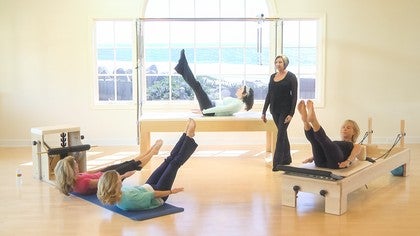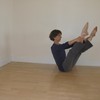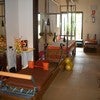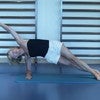Premium workshop
You can view a 2 minute preview. For details, scroll down below the video.
Description
Objectives
- To help participants see postural patterns and movement limitations more quickly and have easy tools for corrections
- Discuss skeletal alignment and how improving alignment will improve Pilates efficiency
- Focus on the spine, with an emphasis on tails and heads
- Apply these concepts to Pilates exercises
About This Video
Workshops: Teaching Methodology
Comments
Thank you!
JUDITH
Technically it's the base of your sacrum, not the actual coccyx that is dropping down and behind. The coccyx needs to keep it's curled shape!! It's the natural angle of the sacrum, that if extended, would land behind your feet. Images can help: the 3rd leg of a tripod, a dinosaur or kangaroo tail..... or go online or find anatomy books that show how angled the sacrum really is - an image that is reality! I could not use some of my favorite pictures in the filming because of copyright issues, but there are some lovely ones out there.
have to break this up for it to post - read on...
Not sure if this helps, or answers what you need. Feel free to contact me directly if you have more specific questions.
And thanks for watching it and responding!!
judith
You need to be a subscriber to post a comment.
Please Log In or Create an Account to start your free trial.

























